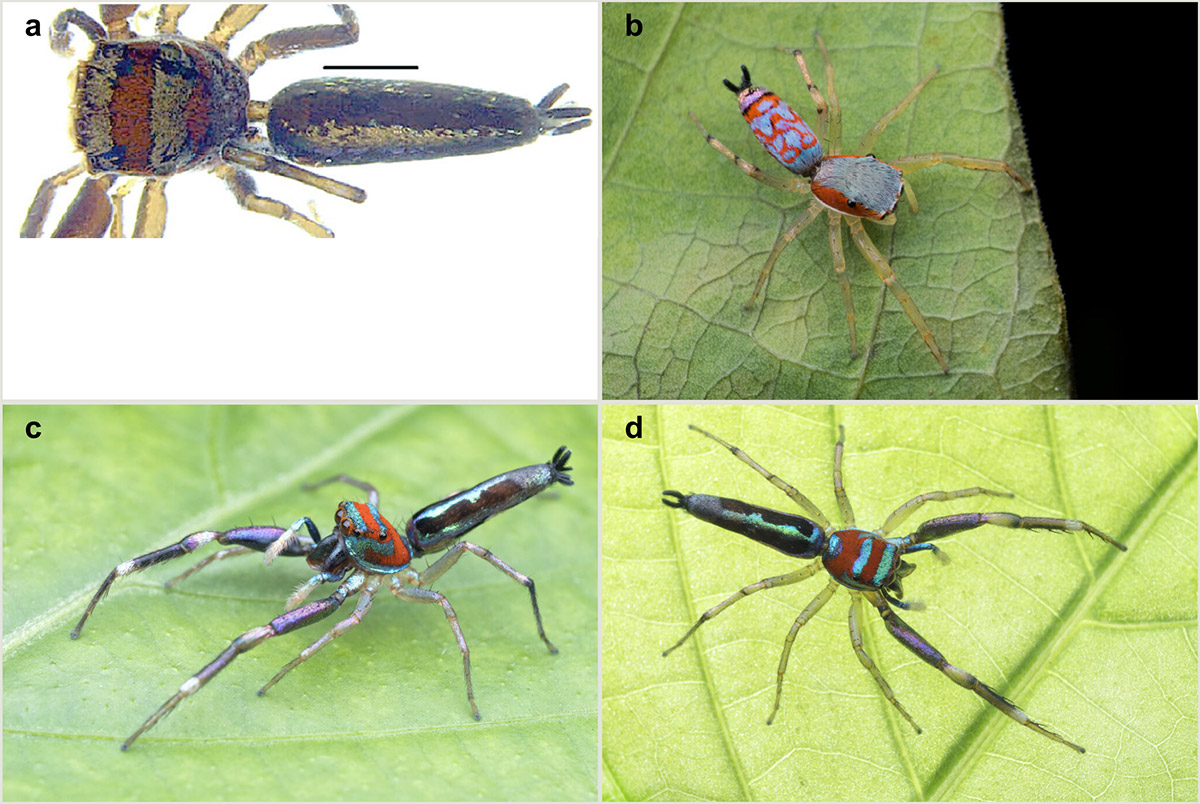The genera Chrysilla and Phintelloides revisited with the description of a new species (Araneae, Salticidae) using digital specimen DOIs and nanopublications
Some incongruences within the genera of the tribe Chrysillini are disentangled.
- The transfer of C. jesudasi Caleb & Mathai, 2014 from Chrysilla as type species of Phintelloides Kanesharatnam & Benjamin, 2019, based on analysis of molecular data is validated by morphology.
- An interesting new species known only from the forest canopy in Borneo, Phintelloides scandens sp. nov, is described based on both male and female specimens.
- Distinguishing chrysilline genera is mostly based on traditional somatic characters, e.g., habitus, carapace and abdomen patterns, mouthparts, and genital organs. The utility of two character systems for distinguishing chrysilline genera is highlighted:
- the presence of a flexible, articulating embolic tegular branch (etb) in combination with the conformation of the characteristic construction of the epigyne in Chrysilla and Phintelloides;
- presence of red colour on carapace and abdomen of live males and females, in combination with abundant blue/violet/white iridescent scales such as in Chrysilla and Siler. The red colour usually gets lost in alcohol, hampering species identification of alcohol material.
- The genera Chrysilla and Phintelloides are redefined.
- Specimens of the heretofore unknown female of Chrysilla deelemani Prószyński & Deeleman-Reinhold, 2010 are described.
- The male and female of Chrysilla lauta and male of C. volupe are redescribed.
- The genus Chrysilla is diagnosed and discriminated from Phintella Bösenberg & Strand, 1906, Siler Simon, 1889, Phintelloides Kanesharatnam & Benjamin, 2019 and Proszynskia Kanesharatnam & Benjamin, 2019.
- The structure of the female genital organ of Phintelloides flavumi Kanesharatnam & Benjamin, 2019 is scrutinized and the generic placement of Phintelloides is discussed.
- Males and females of one of the most variable species, Phintelloides versicolor (C. L. Koch, 1846) are described.
- Phintelloides munita (Bösenberg & Strand, 1906) is removed from synonymy with P. versicolor.
- Phintella leucaspis Simon 1903 (male, Sumatra) is synonymized with P. versicolor.
Authors: Christa L. DEELEMAN-REINHOLD, Wouter ADDINK, Jeremy A. MILLER
Download: https://bdj.pensoft.net/article/129438/




